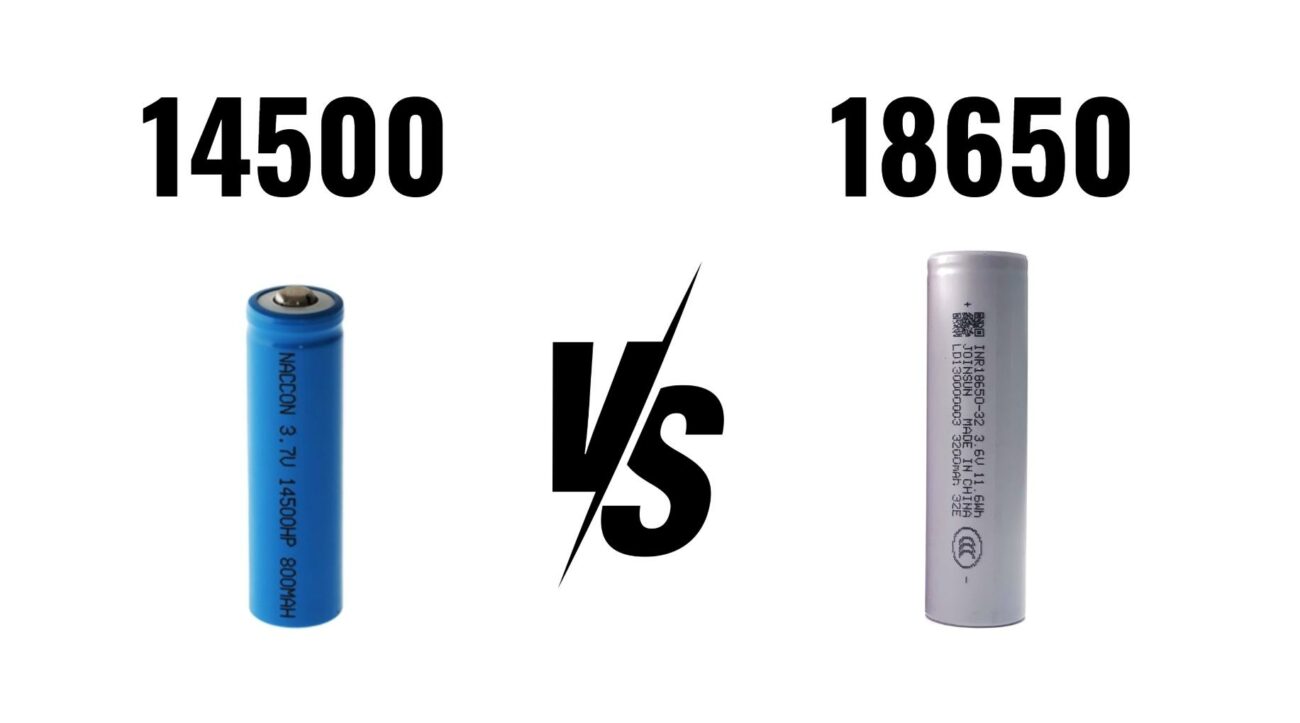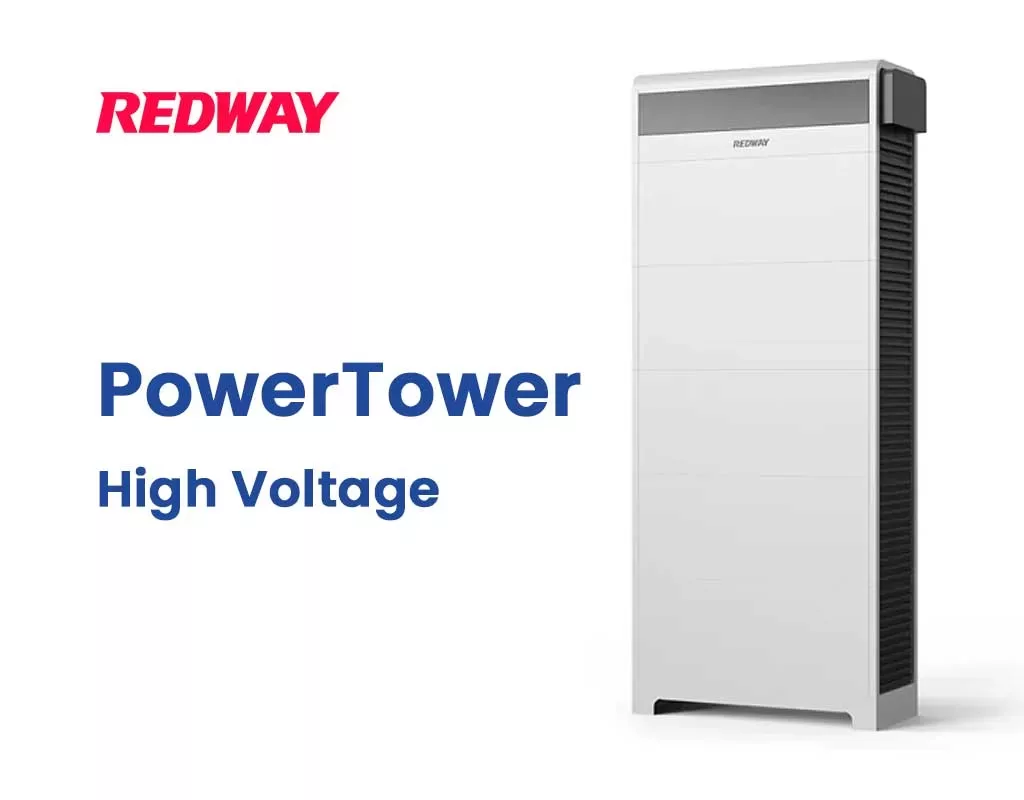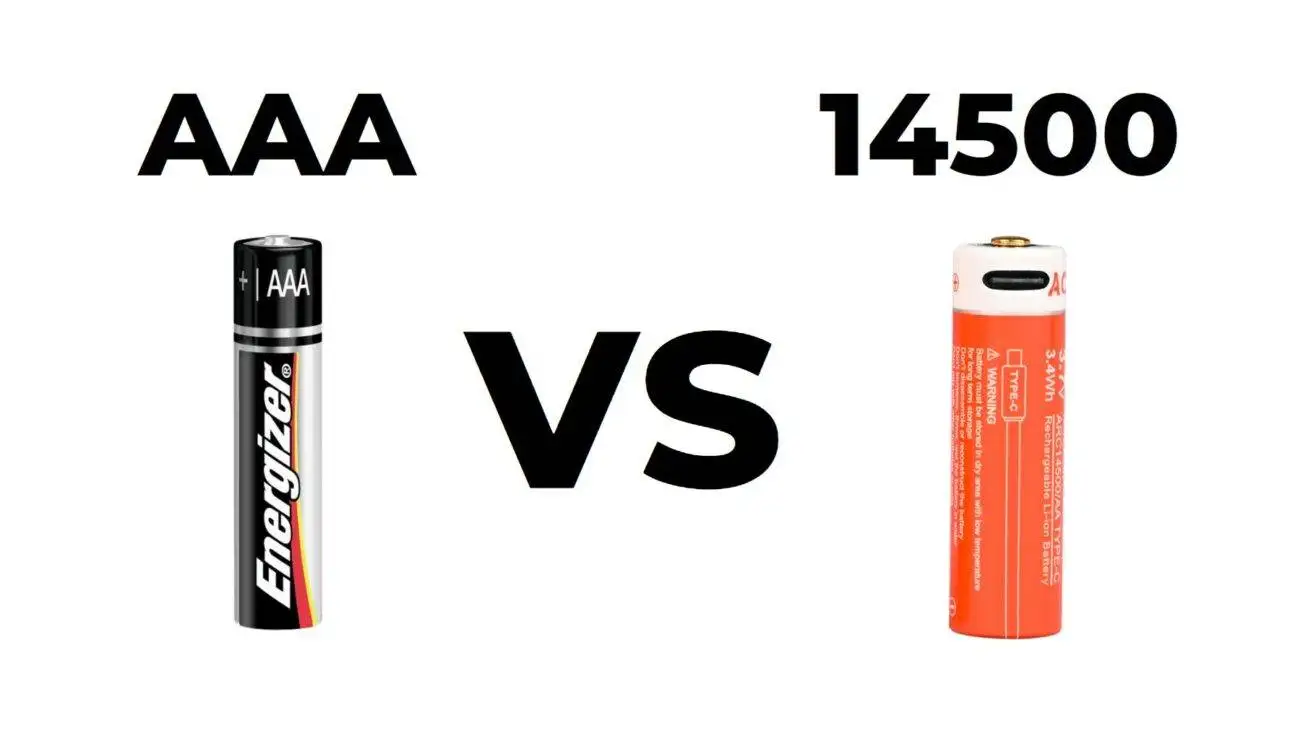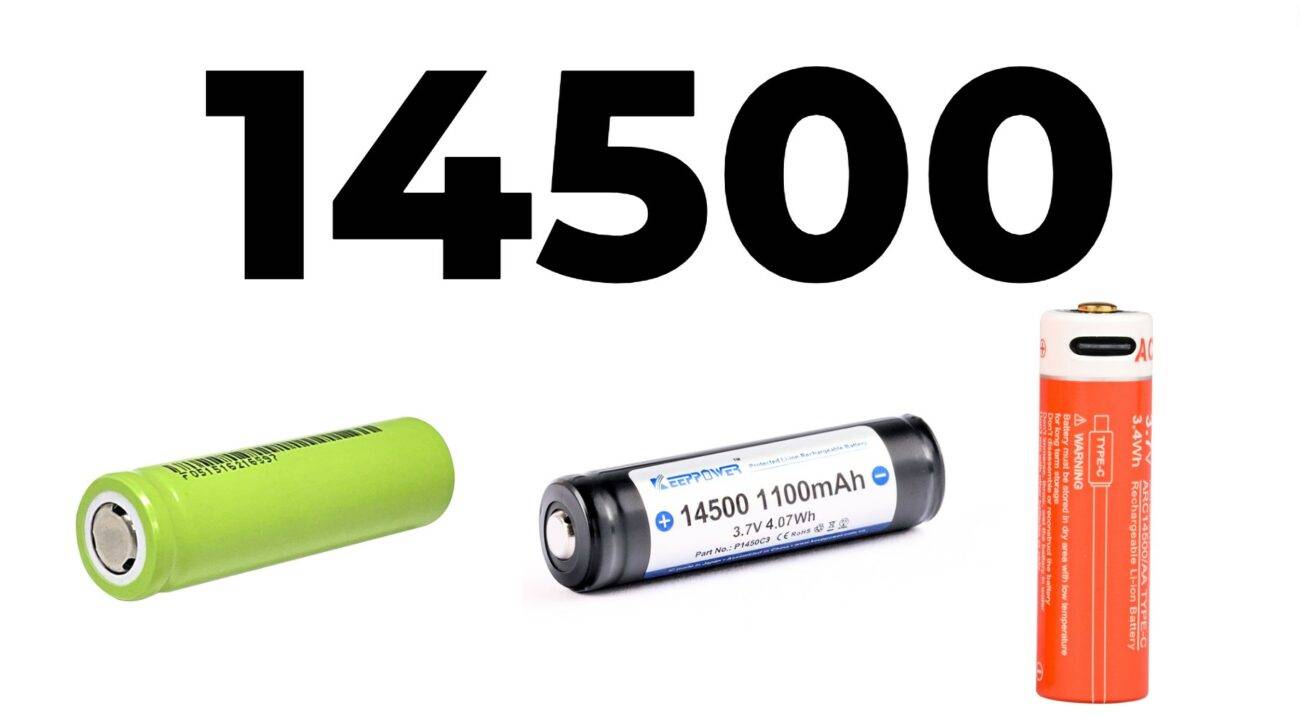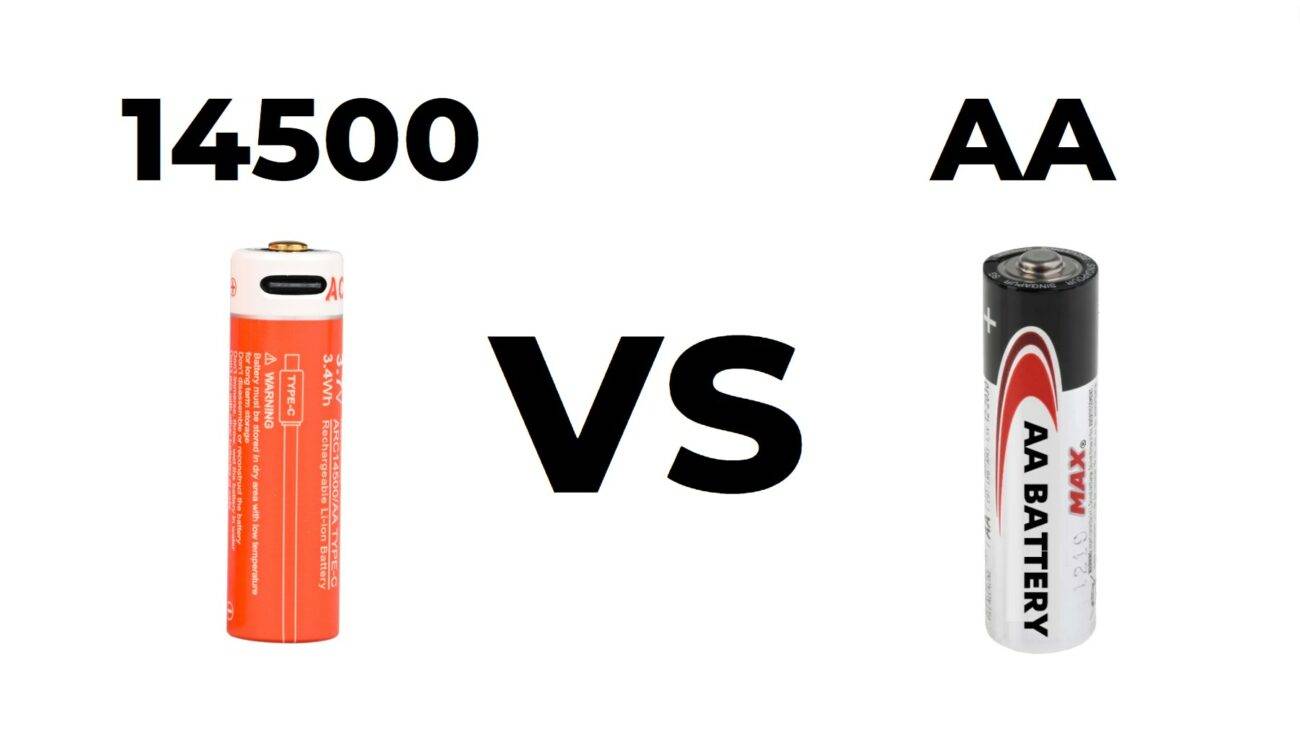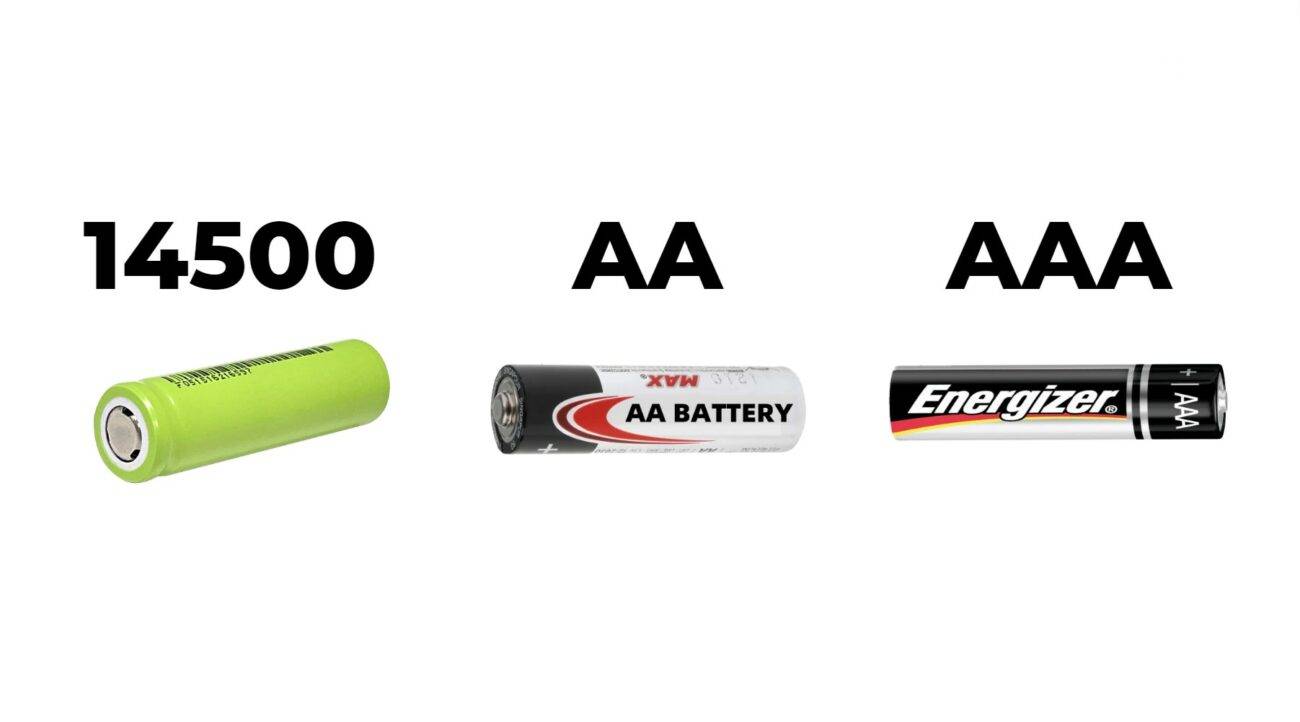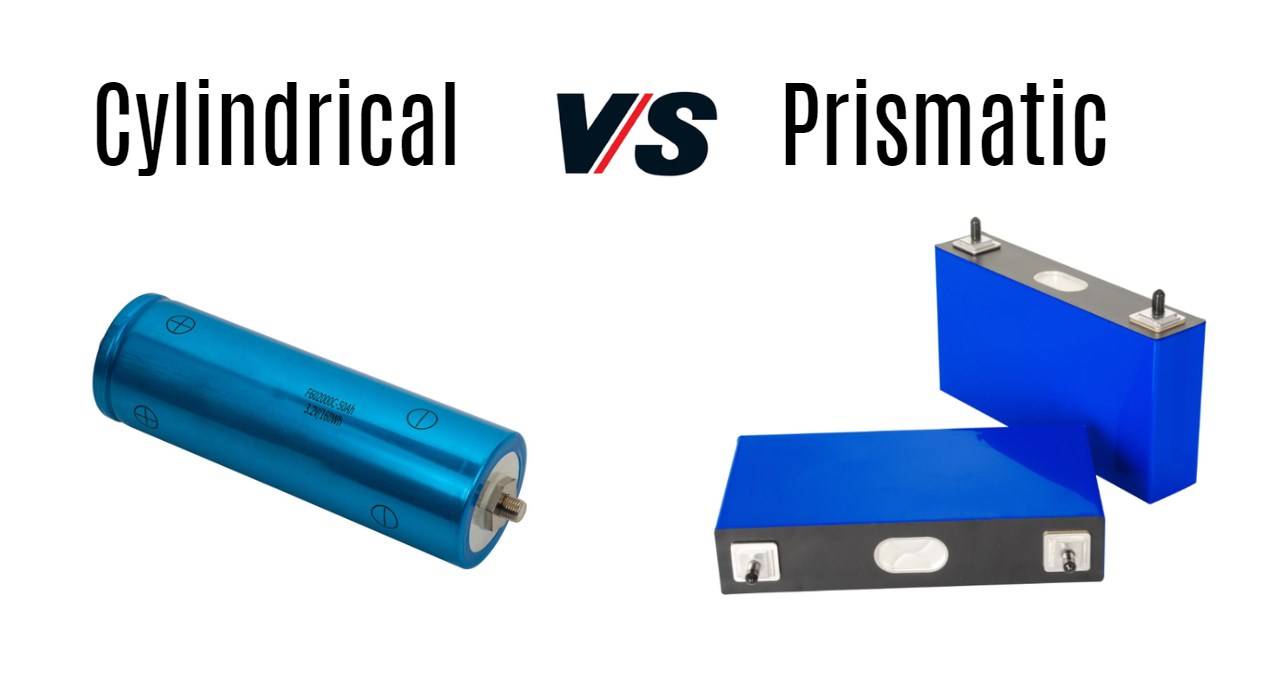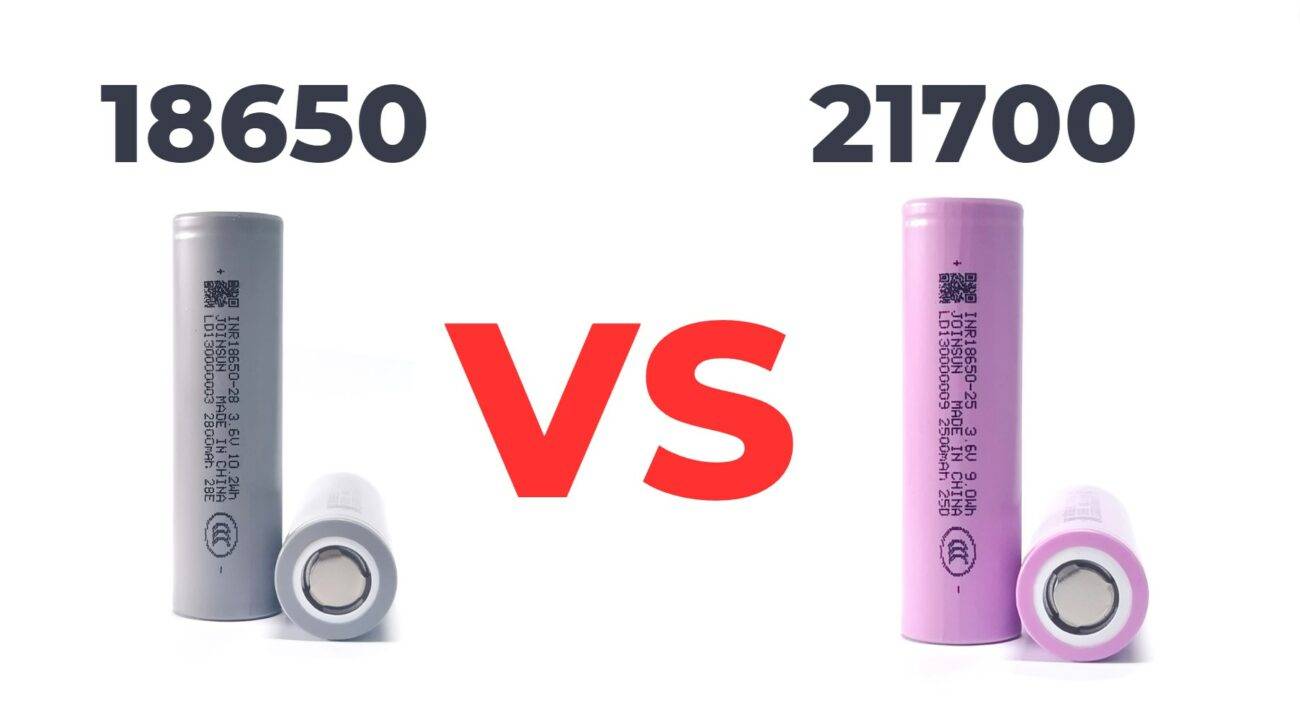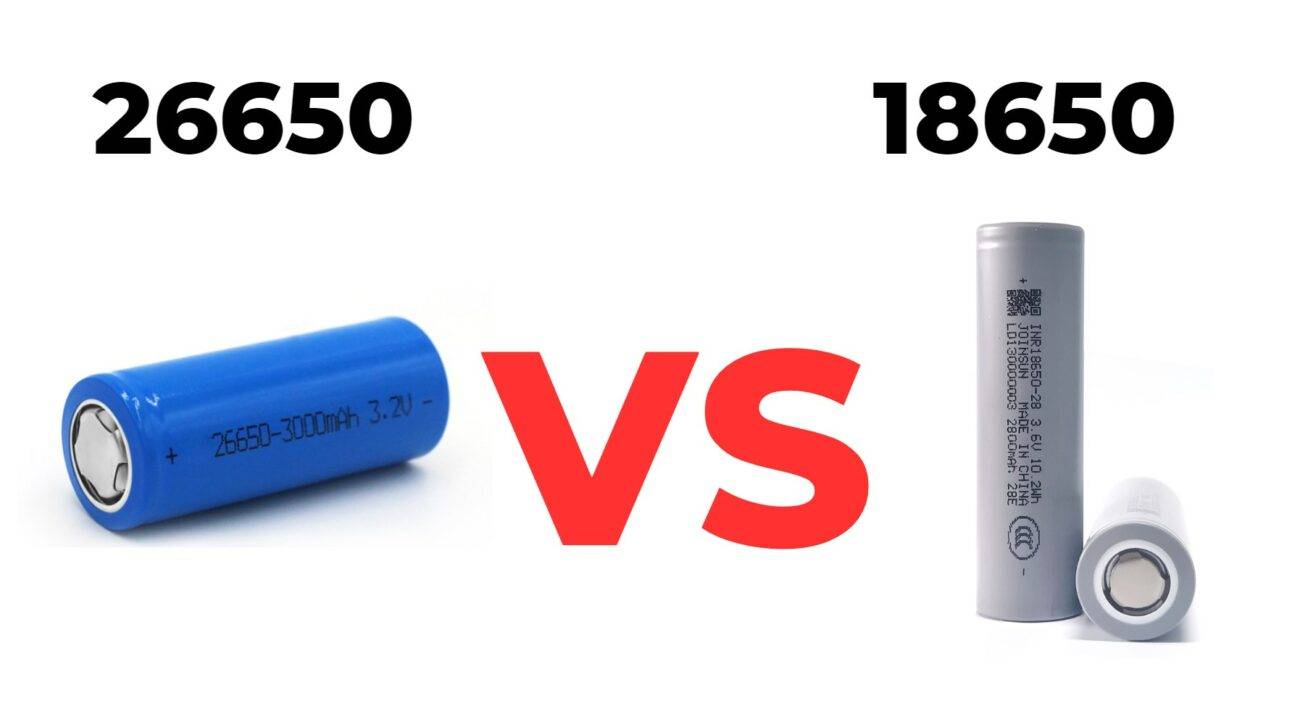Choosing between 14500 and 18650 batteries is essential for ensuring optimal performance in various devices, from flashlights to electronic cigarettes. Understanding their differences in size, capacity, and applications will help you make an informed decision. This guide provides a comprehensive overview of both battery types, including their advantages and ideal uses.
What is a 14500 battery?
A 14500 battery is a cylindrical lithium-ion rechargeable cell that measures approximately 14mm in diameter and 50mm in length. It has a nominal voltage of 3.7V and is commonly used as a direct replacement for AA batteries in devices that require higher voltage.
| Specification | Value |
|---|---|
| Diameter | ~14 mm |
| Length | ~50 mm |
| Nominal Voltage | ~3.7 V |
| Typical Capacity | 600mAh to 2000mAh |
How does a 14500 battery compare to AA batteries?
While the 14500 and standard AA batteries share similar dimensions, their voltage ratings differ significantly. AA batteries typically have a nominal voltage of 1.5V (alkaline) or 1.2V (NiMH), while the 14500 provides 3.7V, making it unsuitable for devices designed solely for AA batteries unless specified.
| Battery Type | Voltage | Chemistry |
|---|---|---|
| AA Battery | 1.5V (alkaline) / 1.2V (NiMH) | Alkaline / NiMH |
| 14500 Battery | ~3.7V | Lithium-Ion |
What are the common applications for 14500 batteries?
The 14500 battery is widely used in:
- Flashlights: High-performance flashlights often utilize these batteries due to their higher voltage.
- Electronic Cigarettes: Commonly found in vaping devices for consistent power delivery.
- Portable Electronics: Used in various compact devices that require rechargeable power sources.
What is the difference between 14500 and 18650 batteries?
The primary differences between 14500 and 18650 batteries lie in their size, capacity, and applications:
- The 18650 measures approximately 18mm in diameter and 65mm in length, offering higher capacity options (typically ranging from 1200mAh to over 3600mAh) compared to the 14500.
| Battery Type | Diameter | Length | Typical Capacity |
|---|---|---|---|
| 14500 | ~14 mm | ~50 mm | ~600mAh to ~2000mAh |
| 18650 | ~18 mm | ~65 mm | ~1200mAh to ~3600mAh |
How do the capacities of 14500 and 18650 batteries differ?
The capacity of a battery determines how long it can power a device before needing recharging. Generally:
- The 18650 battery offers significantly higher capacities compared to the 14500, making it suitable for high-drain applications such as electric vehicles or larger electronics.
What are the advantages of each battery type?
Advantages of 14500 Batteries:
- Compact Size: Ideal for small devices where space is limited.
- Higher Voltage Output: Provides more power than standard AA batteries.
- Rechargeable: Reduces waste compared to disposable options.
Advantages of 18650 Batteries:
- Higher Capacity Options: Suitable for devices requiring longer runtimes.
- Versatile Applications: Commonly used in electric vehicles, laptops, and power tools.
- Established Technology: Widely available with extensive performance data.
How do you determine which battery is suitable for your device?
To choose the right battery:
- Check your device’s specifications for required voltage and capacity.
- Consider space limitations; ensure that the chosen battery fits within your device.
- Evaluate performance needs; high-drain devices may require higher-capacity options like the 18650.
What factors should you consider when selecting a battery?
When selecting between 14500 and 18650 batteries, consider:
- Voltage Requirements: Ensure compatibility with your device’s voltage needs.
- Capacity Needs: Assess how long you need your device to run on a single charge.
- Physical Size Constraints: Choose based on available space within your device.
- Cost vs Performance: Balance upfront costs with expected performance benefits over time.
Buy Wholesale Battery Tips
For those considering wholesale purchases of batteries or related products, partnering with a reliable manufacturer like Redway Battery, known for its extensive experience in lithium battery production, is crucial. To make OEM orders effectively:
- Define your specifications clearly.
- Communicate regularly with the manufacturer throughout the process.
- Ensure compliance with safety standards.
Industrial News
Recent advancements highlight significant growth in demand for lithium-ion batteries as consumers increasingly seek sustainable solutions for energy storage across various applications, including electric vehicles and renewable energy systems.
Redway Expert Views
“Investing in high-quality lithium-ion technology not only ensures reliable power but also supports environmental sustainability initiatives,” states an expert from Redway Battery.
FAQ Section
- What is an amp hour?
An amp hour measures how much charge a battery can deliver over one hour at a rate of one ampere. - What is a watt hour?
A watt hour measures the total amount of energy stored in a battery, calculated by multiplying voltage by amp hour rating. - How do I choose between using Ah or Wh?
Consider your application needs; use Ah for current-related applications and Wh when assessing total energy capacity.



